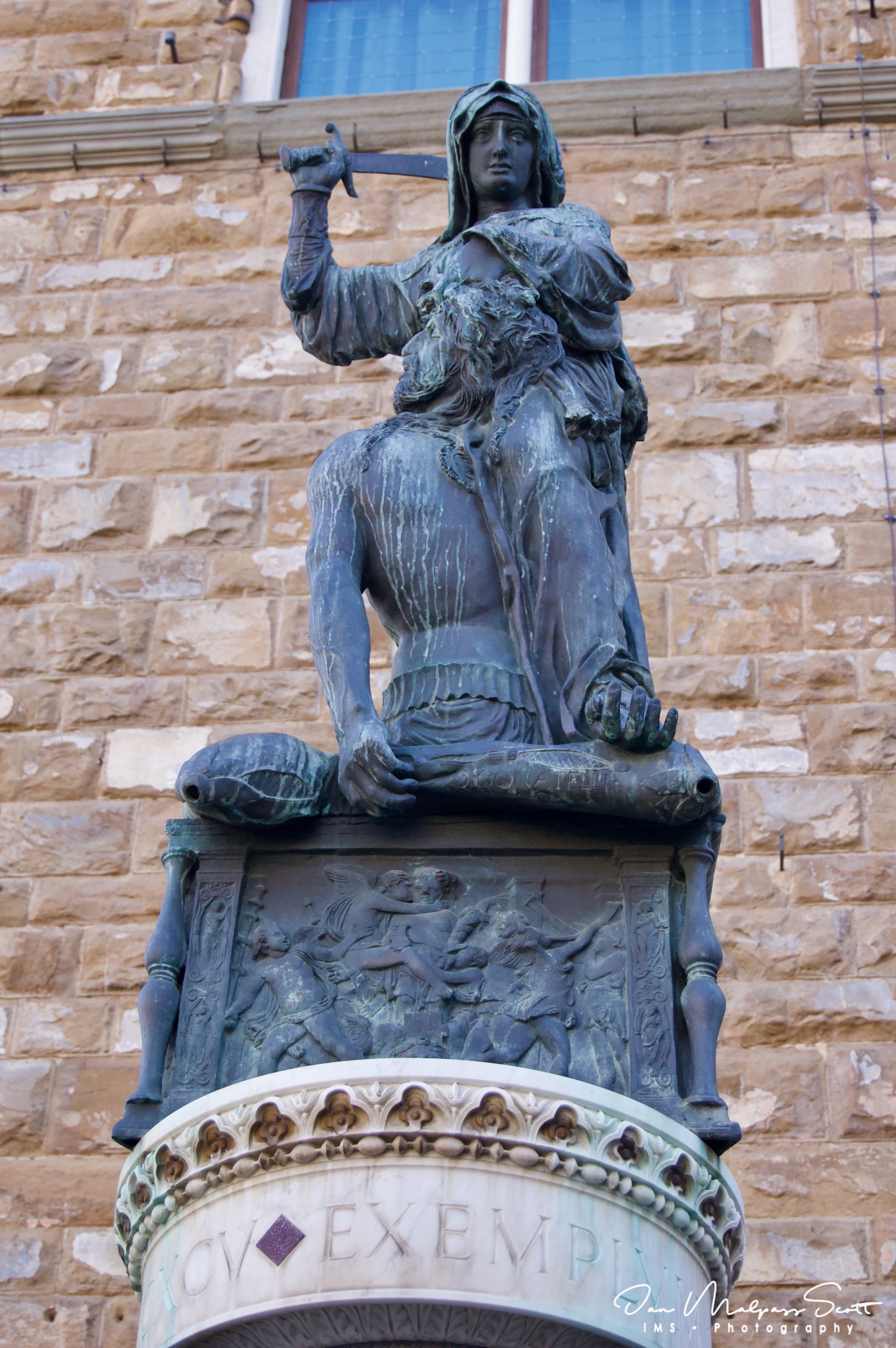Judith and Holofernes (1457–1464) is a bronze sculpture created by the Italian Renaissance sculptor Donatello at the end of his career. It can be seen in the Hall of Lilies (Sala dei Gigli), in the Palazzo Vecchio, Florence, Italy. A copy stands in one of the sculpture’s original positions on the Piazza della Signoria, in front of the Palazzo Vecchio.
It depicts the assassination of the Assyrian general Holofernes by Judith and is remarkable for being one of the first Renaissance sculptures to be conceived in the round, with its four distinct faces. The subject of Judith beheading Holofernes, depicting the climax of the story in the deuterocanonical Book of Judith, was a common subject in art and is associated with the Power of Women topos.
The statue was commissioned by Cosimo de’ Medici as a decoration for the fountain in the garden of the Palazzo Medici-Riccardi. Together with Donatello’s David, it was positioned in front of the palace around 1457, when Cosimo de’ Medici’s extended family decided to move into it. Although the exact place where these two were displayed is unknown, both of these statues became a symbol for the power Florence possessed.
Judith and Holofernes depicts Judith standing powerfully with a raised sword, holding the head of Holofernes by his hair. The statue was originally gilded; some gilding remains on the sword. To facilitate the gilding the bronze was cast in 11 parts. The base of the sculpture resembles a cushion, a naturalistic device first used by Donatello for his St. Mark in the Orsanmichele. Intended to function as a fountain, this statue sits on a triangular pedestal with holes for water to flow through.
In 1495, the sculpture was placed on the Piazza della Signoria, at the side of main door the Palazzo Vecchio, in memory of the expulsion of Piero di Lorenzo de’ Medici from Florence and the introduction of the Florentine republic under Girolamo Savonarola. This time, this statue symbolized the expulsion of the tyrannical Medici. The statue was later moved to the courtyard inside the Palazzo Vecchio, and 1506 into the Loggia dei Lanzi. In 1919, it was then placed on the left side of the Palazzo Vecchio. It was replaced by a bronze copy in 1988 and the original, after restoration, was given a final place in the Sala dei Gigli inside the Palazzo Vecchio.


